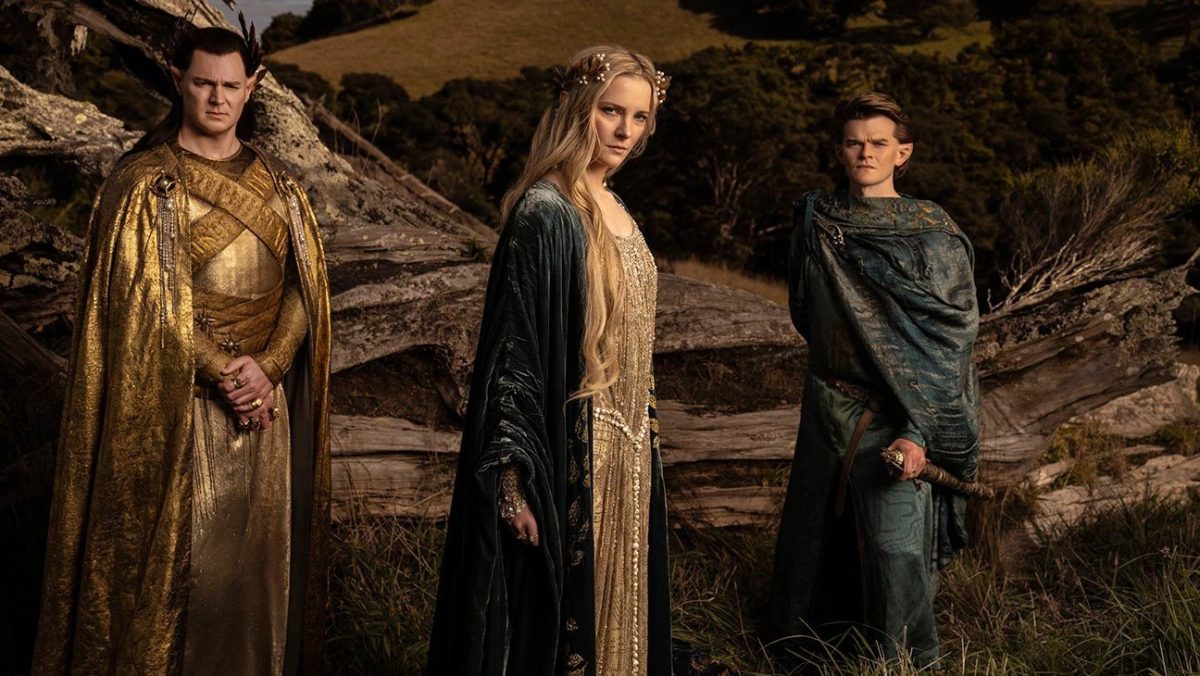Photo Courtesy of The Hollywood Reporter
After several long years, the work of J.R.R. Tolkien is making its return to screens around the world with Amazon’s “The Lord of the Rings: The Rings of Power.” Despite its status as the top Amazon series, the show stumbles in several ways in its quest to meet the precedent set by its Hollywood predecessors.
One of the more problematic aspects of the show is the sheer quantity of plot threads that develop over the course of eight episodes. This phenomenon can probably be attributed to Tolkien’s complicated, overwhelmingly lore-heavy appendices and notes which expand on his universe.
From Galadriel’s (Morfydd Clark) fight to vanquish Sauron to Elrond’s (Robert Aramayo) complicated friendship with dwarves, along with Isildur’s (Maxim Baldry) rise to infamy, “The Rings of Power” follows an overwhelming number of plot points as it fleshes out iconic characters that later appear in “The Lord of the Rings.”
Though it’s fascinating to see the origins of these characters, the sheer amount of names, places and Easter eggs makes it difficult to appreciate its full potential for fans who have not taken a deep dive into Tolkien’s other works.
For those who are willing to let a few details go over their heads, though, there’s plenty of other nuances to the show that help capture some of the attention.
It should come as no surprise that the score is one of the highlights of the show since its cinematic predecessors featured some of the most iconic soundtracks in Hollywood. Though “The Rings of Power” does not feature music from Howard Shore, who scored “The Lord of the Rings” and “The Hobbit,” Bear McCreary’s interpretation of Tolkien’s world is a masterpiece that perfectly complements the setting.
Backed by haunting French horns and strings, the sweeping landscapes and set designs of the show make “The Rings of Power” worth the time almost on their own. The locations and cultures, while fresh to fans and newcomers alike, are detailed and nuanced, providing the perfect backdrop for the action itself.
However, even the most stunning scenery and prop design can’t hide every flaw in the show.
The costuming in the show, while brightly colored and intricate, has a sheen that one can only associate with the modern age. The cloaks do not feel well-lived-in like those from the movies did, and even struggle to fit into the tone of the costumes set by “The Lord of the Rings” and “The Hobbit” in their respective storylines.
Character makeup also takes the viewer out of the high fantasy experience with glaringly modern choices. A close-up shot of Galadriel in the early episodes of the show makes the audience contemplate which brand from Sephora her highlighter may be, rather than the words coming from her mouth.
However, each actor does a great job at grounding their performances and staying true to Tolkien’s world.
Stand-out performances include Markella Kavenagh as Nori and Charlie Vickers as Halbrand. Some of the actors seem almost too pretty to seem grounded in the world, but give convincing performances, nonetheless.
In the end, people who watch “The Rings of Power” for pure enjoyment will have no problem feasting their senses on the sights and sounds on screen but may not understand the show in its full. Those looking to relive the euphoria of “The Lord of the Rings” shouldn’t look too closely, or else they will be disappointed in the show’s modern take on Tolkien.







